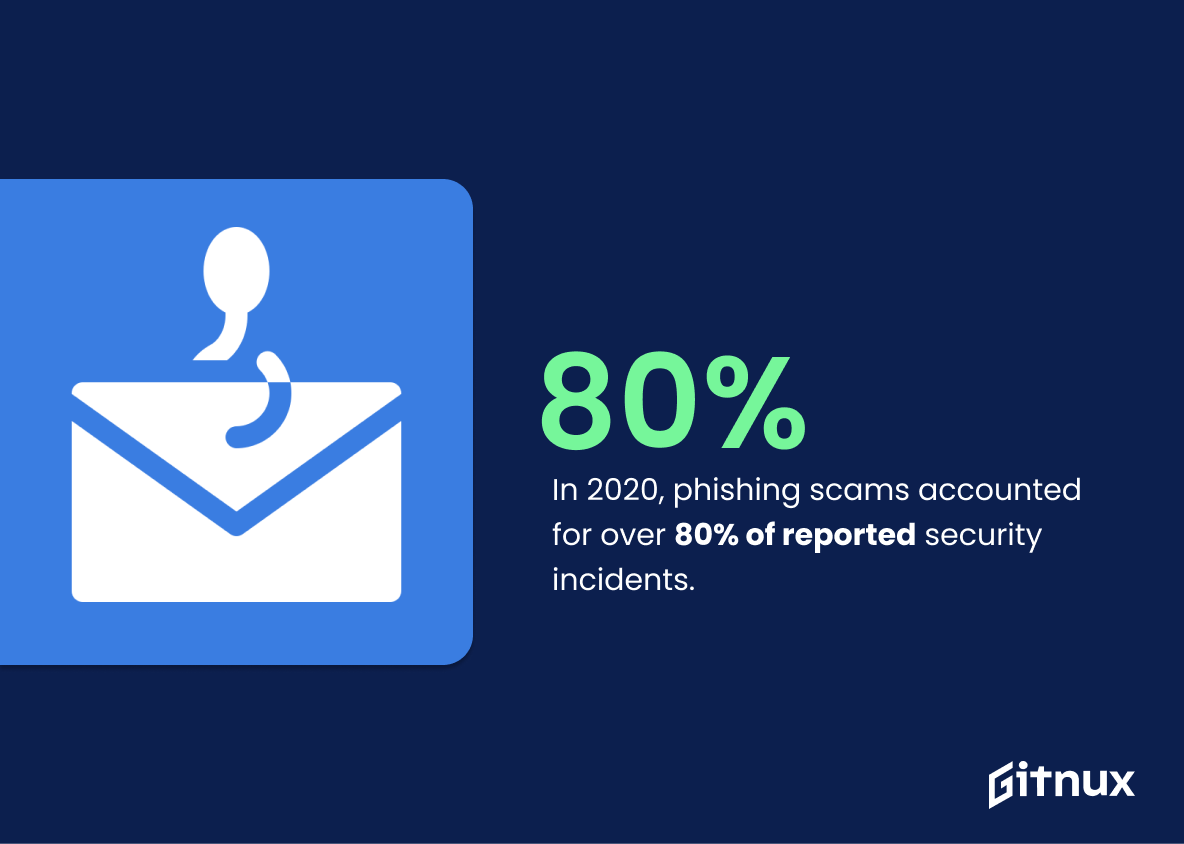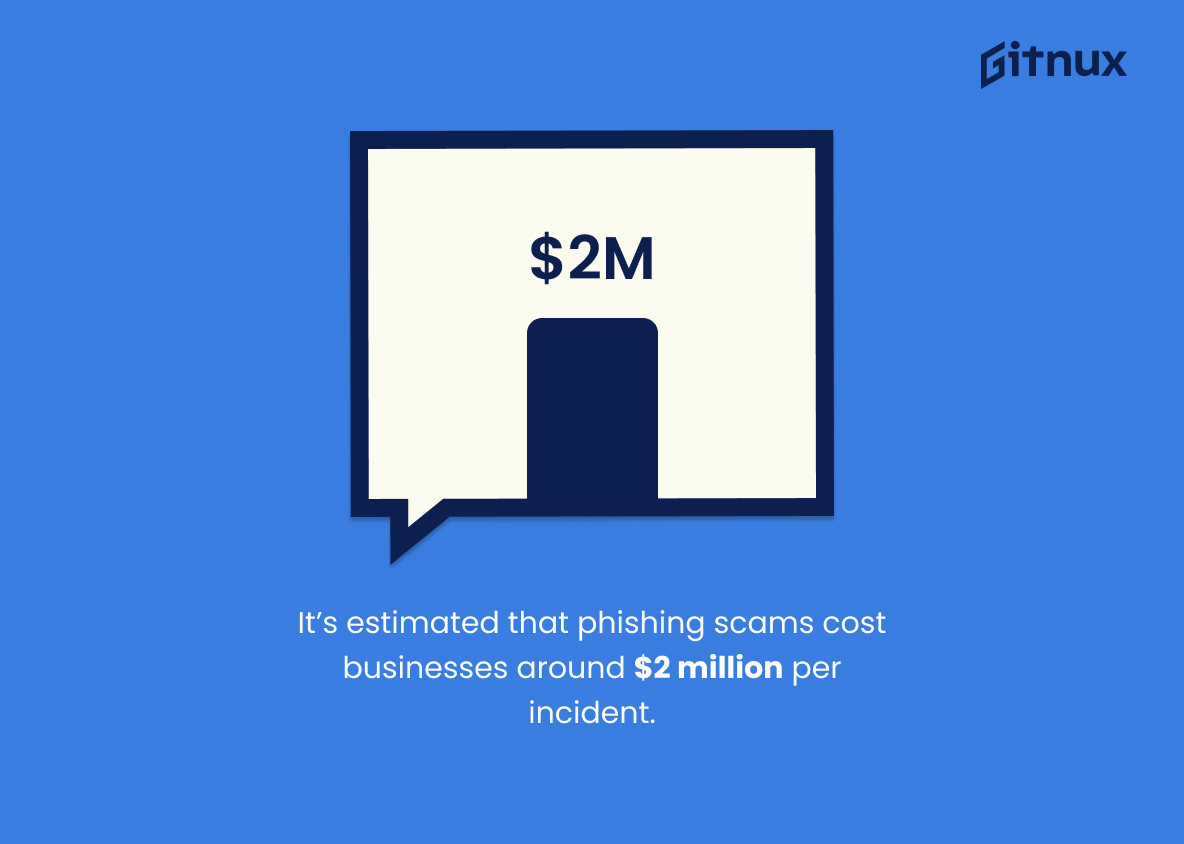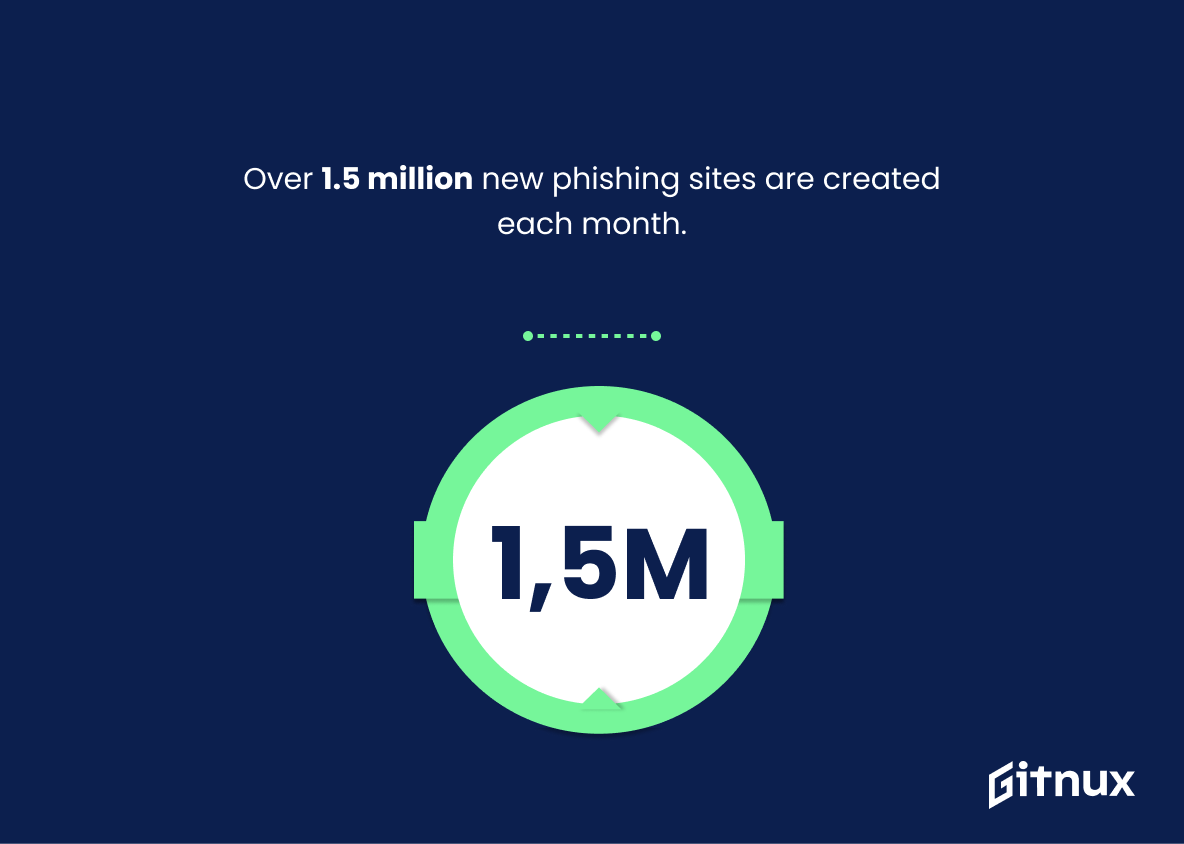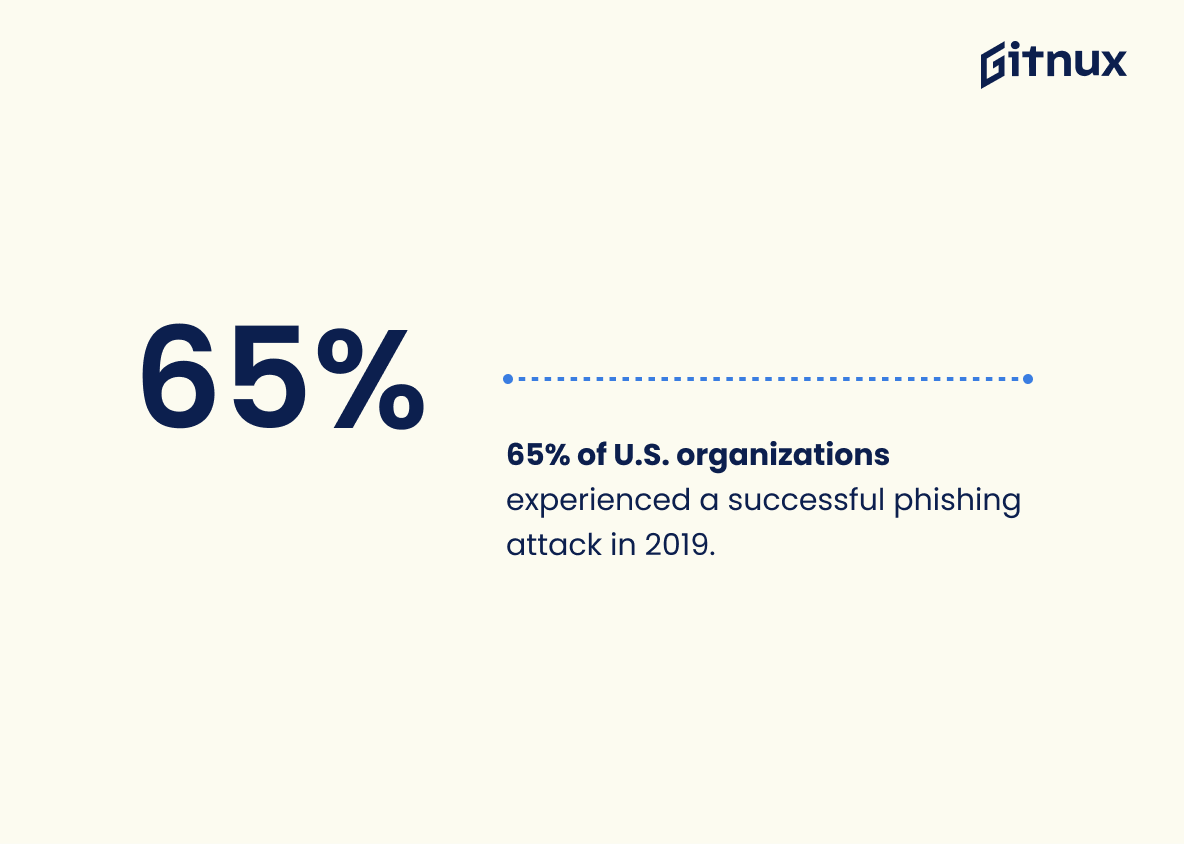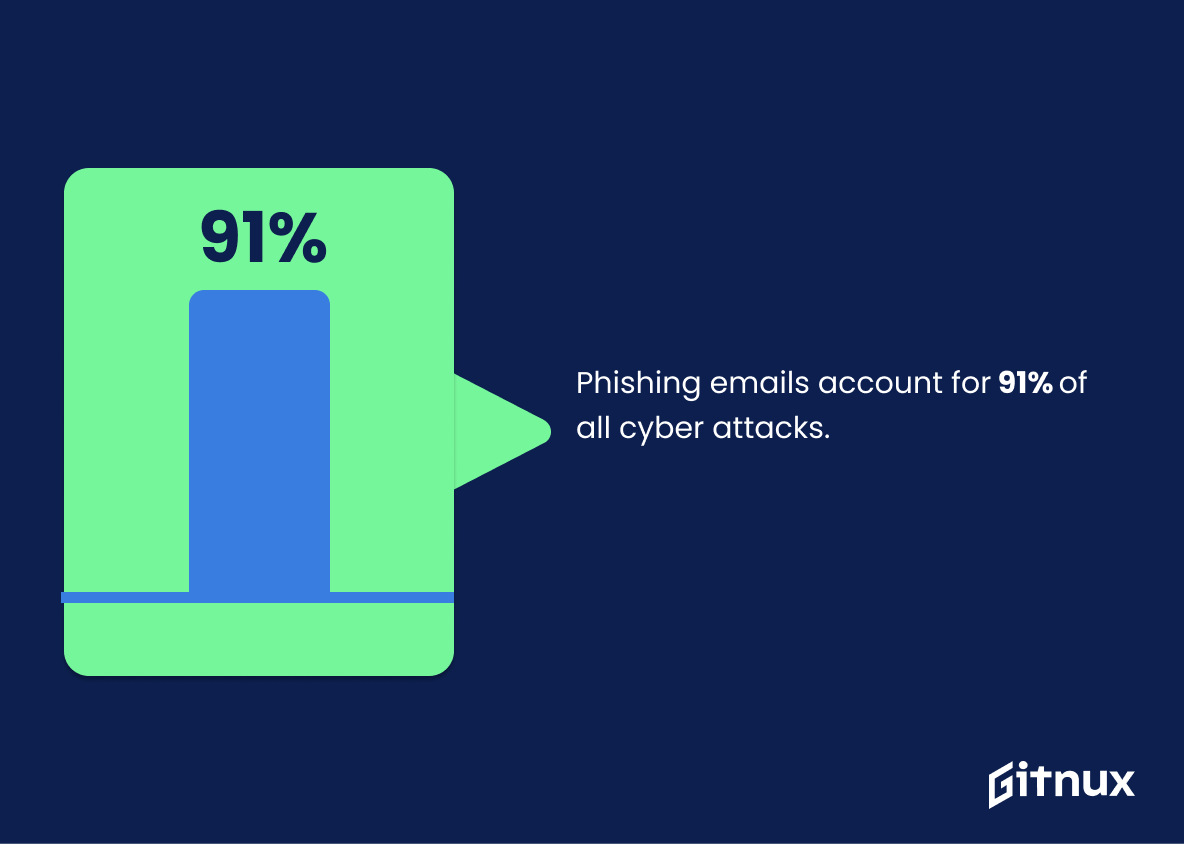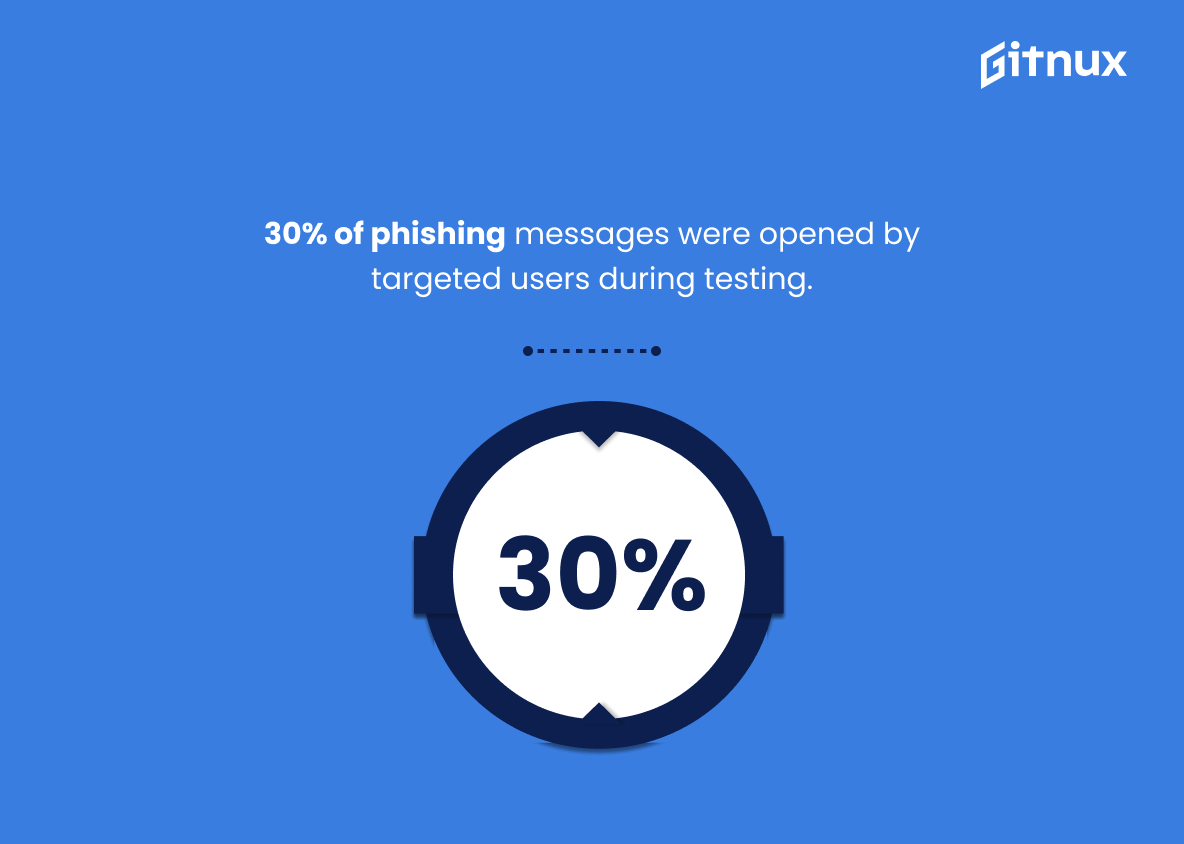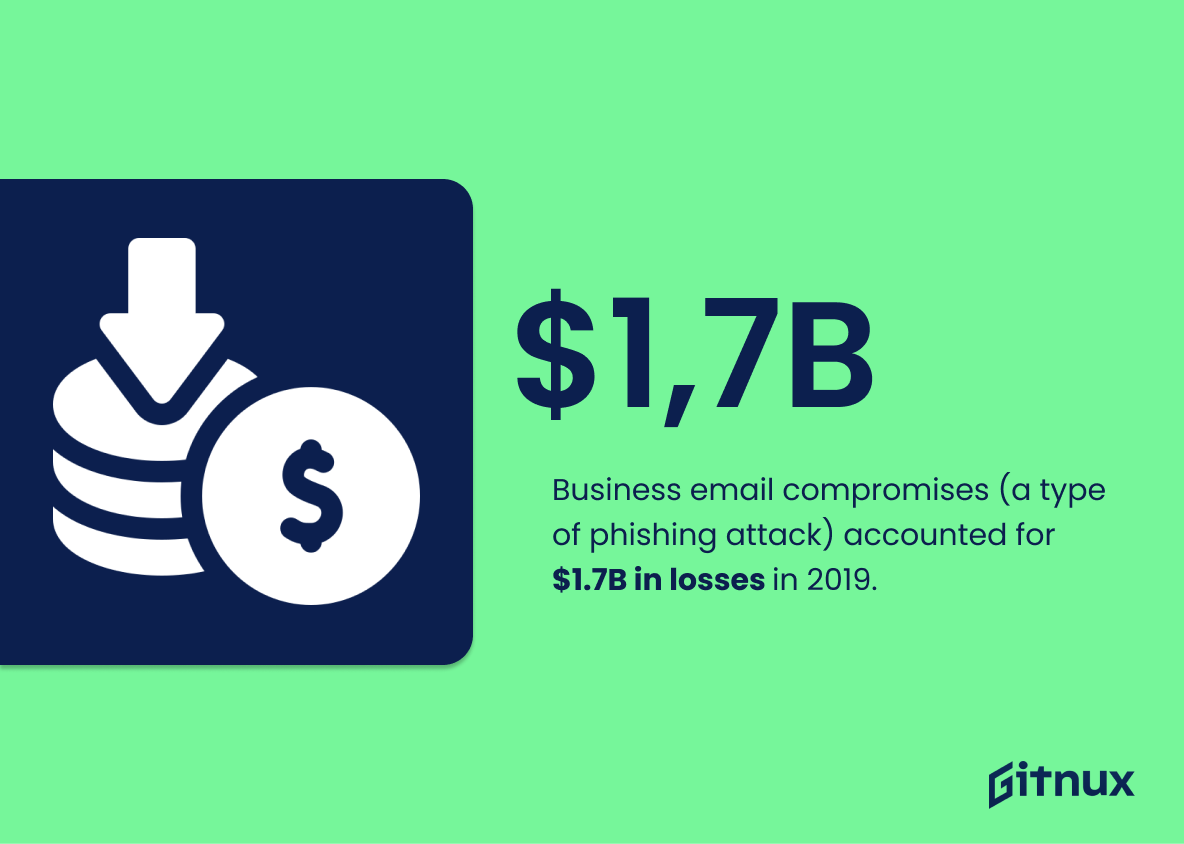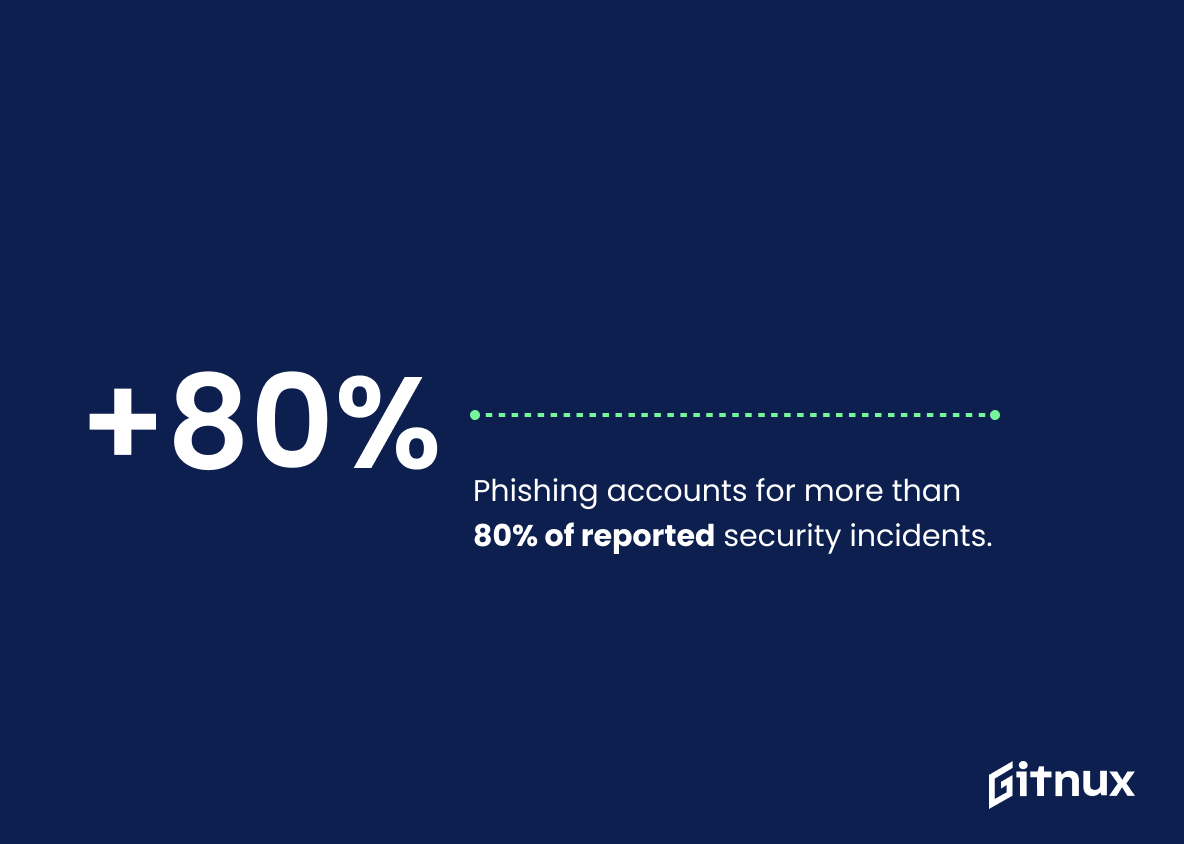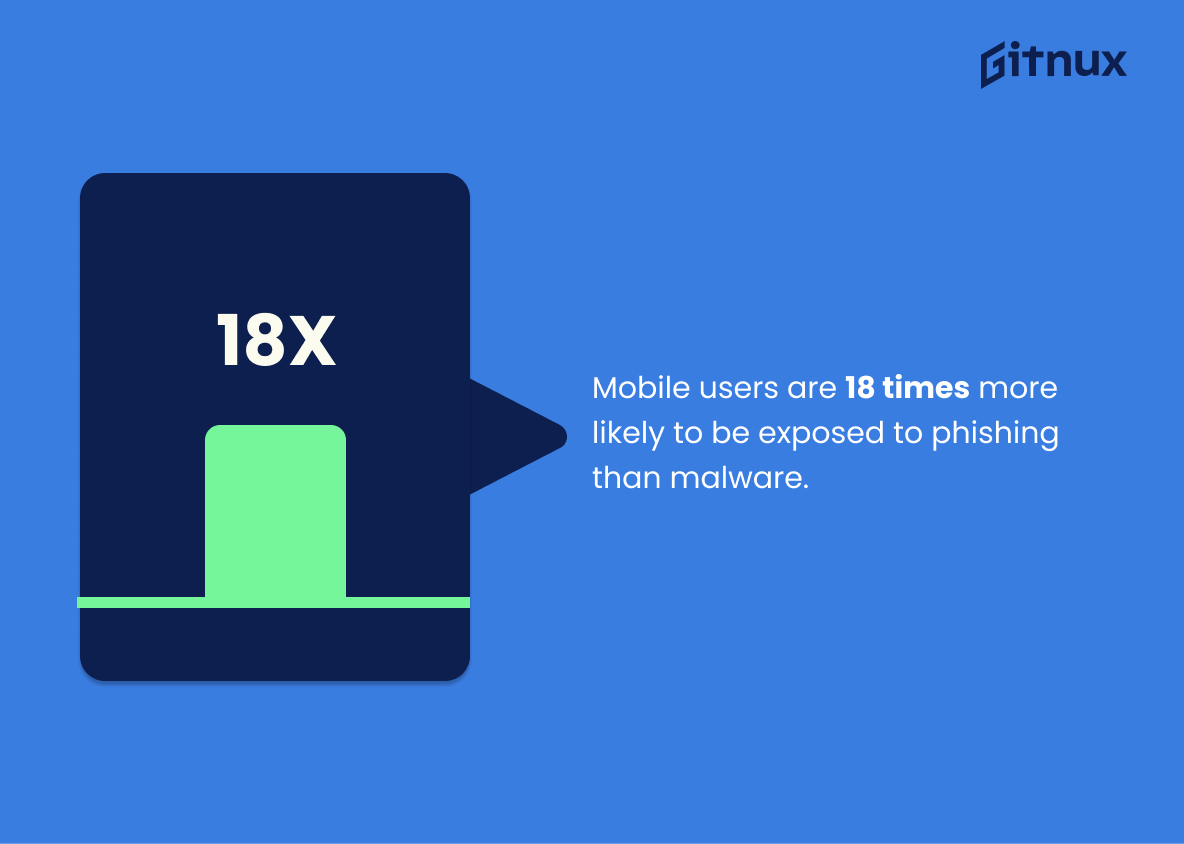In the digital age, the rising tide of cybercrime presents a myriad of challenges, with phishing scams posing a significant threat. These deceptively simple, yet highly destructive, attacks have unfortunately become a daily occurrence. If you ever found yourself questioning how prevalent this issue is, then you are in the right place. In this blog post, we will delve into the illuminating world of phishing scam statistics, providing a comprehensive look at the scale of the problem, the most targeted demographics, and how these malicious scams continue to evolve. Stay tuned as we lay bare the disconcerting facts and figures of this modern-day nuisance, that everyone should be cognizant of.
The Latest Phishing Scam Statistics Unveiled
In 2020, phishing scams accounted for over 80% of reported security incidents.
Drawing the spotlight onto the astonishing figure from 2020, which underscores that over 80% of reported security incidents were due to phishing scams, serves as a loud wake-up call. It signifies the exceptional threat phishing scams pose to our digital safety, ringing alarm bells for businesses and individuals alike. In a landscape where data is the new oil, this alarming statistic offers a sharp and sobering perspective; not only on the prevalence of phishing scams but also on the pressing need for upgraded countermeasures, greater awareness, and stringent cyber-hygiene practices. This pivotal data point in a blog post about Phishing Scam Statistics is like a resounding gong, which not just emphasizes the overwhelming presence of these digital menace, but also underscores the importance of continuous education and advancement in cybersecurity.
It’s estimated that phishing scams cost businesses around $2 million per incident.
The glittering digital era, despite its numerous advantages, undoubtedly brings along with it a spate of cyber threats where phishing scams garnish the lead role. When you flush out the alarming fact that each phishing scam incident roughly drains around $2 million from businesses, the gravity of the situation amplifies. By shedding light on this hefty financial attrition, this statistic serves as a clarion call for enterprises to fortify their cyber defenses, engage in a consistent process of staff education to identify scam attempts, and faithfully backup data. Ultimately, this vital data point shapes it crystal clear that investing in robust cybersecurity positions isn’t an option, but a stringent imperative.
About 90% of data breaches come from phishing scams.
In the grand theater of cybersecurity threats, the spotlight dramatically reveals a devil in the details- almost 90% of data breaches originate from phishing scams. Now, imagine the blog post as a behind-the-scenes tour that throws open the dark corners of Phishing Scam Statistics. The seemingly innocuous email or the completely believable text, all hiding a cyber hunter, waiting to pounce. This figure challenges us, forces us to confront the reality of an increasingly interconnected world where phishing scams have not merely upped their game, but in fact, become the game changer. An impressive testament to their rampant prevalence, this stark figure cements the role that phishing scams have in todays’ data breaches, making it an essential cornerstone of any dialogue centered on scam statistics. Emphasizing vigilance, it’s a clarion call to action for both businesses and individuals, underlining the paramount importance of secure cyber practices in everyday transactions.
In the UK, a third of businesses (around 33%) suffered from phishing attacks in 2020.
Through the lens of this fascinating statistical revelation, one can readily comprehend the magnitude of the issue that phishing scams pose to a burgeoning business landscape in the UK. Unveiling the vulnerabilities of approximately 33% of businesses to such malicious activities in 2020 alone scoops out the urgency of underlining mitigative strategies against phishing scams. This number also showcases the deviously innovative nature of such scams, as even in a relatively tech savvy environment, one in every three businesses fell prey to it. The sophisticated facade of phishing attacks, especially in an era transformed by digital advancement, is more than evident through this statistic, making it an essential discussion point while examining phishing scam statistics in the blog.
Over 1.5 million new phishing sites are created each month.
Delving into the depths of the digital ocean, one can hardly be oblivious to the swarm of phishing nets cast around. This startling statistic of over 1.5 million new phishing sites surfacing each month brings to light the tremendous scale and rapid proliferation of cyber deceptions in our internet-centric world. In the context of a blog post about Phishing Scam Statistics, such data serves as a lighthouse, warning netizens of the widespread and escalating phishing threats they are oblivious to. It aims to resonate a sense of urgency in understanding, recognizing, and counteracting such threats, thus walking the line between the convenience of the digital world and the lurking threats of phishing scams.
The financial sector is most targeted by phishing, receiving 38% of the total phishing attacks.
Delving into the depths of the phishing scam statistics, it’s like uncovering a concealed treasure to find that the financial sector bears the brunt of these treacherous attacks, attracting a staggering 38% of all phishing attempts. It’s an alarming revelation, almost like shining a strobe light on this sector, highlighting its vulnerability and attractiveness to pesky cybercriminals. Understanding that the financial sector is the troubled damsel in this digital warfare narrative forms a cornerstone for developing potent and targeted protective measures for the institutions in this sector. The statistic also paves the way for further exploration of the particular reasons behind this sector’s attractiveness – leading to comprehensive and effective countermeasures against phishing.
56% of organizations in the US have identified and experienced phishing attacks.
This captivating statistic paints a vivid picture of the scale at which phishing scams permeate the professional landscape in the US. With over half of the organizations falling prey to such malicious attacks, it underlines the dire need for heightened awareness and advanced security measures. It acts as a digital alarm bell, urging both individuals and companies to remain vigilant against the ceaseless threats hiding behind seemingly innocuous emails and links. Equipped with this knowledge, readers of the blog post can grasp the urgency to understand, prevent, and fight against phishing scams.
65% of U.S. organizations experienced a successful phishing attack in 2019.
Within the intricate dance of data encircling phishing scam statistics, the striking realization that 65% of U.S. organizations fell victim to a successful phishing attack in 2019 plunges the reader into an ocean of cyber vulnerability. It underscores the sweeping prevalence and significant potency of phishing threats, serving as a digital siren’s call to action for businesses to heighten their cybersecurity measures. This statistic, an alarming alarm bell, enhances our understanding of phishing scams’ scale, revealing a panorama where more than half of the entities operate with potential digital time bombs. Hence, in the silent battlefield of cyberspace, this statistic becomes a rallying cry for organizations to ramp up their defenses and fortify their digital fortresses.
Phishing emails account for 91% of all cyber attacks.
Painting a vivid picture of the cybercrime landscape, the statistic that 91% of all cyber attacks originate from phishing emails sends a chill down the spine for anyone surfing the digital world. It underlines the sheer dominance of phishing scams in cybercriminal strategies, becoming the menacing king reigning over its digital subjects. One cannot help but stand in awe of this daunting figure when diving into the intricate world of phishing scam statistics, where a seemingly innocuous email can spiral into catastrophic data breaches. This thorny truth adds a notch of urgency, compelling readers to reconsider the importance of cybersecurity and the role that awareness of phishing scams plays in ensuring safe navigation through the vast ocean that is the internet.
30% of phishing messages were opened by targeted users during testing.
Imagine, if you will, a cyber minefield where one in three people unknowingly step onto a trap, springing open a cyber-attack. This is the prominent picture painted by the ominous statistic showcasing that during testing, 30% of phishing messages were unfortunately opened by their unsuspecting targets. This staggering percentage vividly illustrates the pervasive and effective tricks of phishing scammers, casting a tangible shadow on the escalating threats in the digital landscape. In the framework of a blog post about Phishing Scam Statistics, this data genuinely reinforces the critical need for heightened awareness and reinforced security in our digital interactions. The proverbial bait is apparently irresistible to a significant number of Internet users, a scenario which serves as a dire warning to all prying eyes on the web.
Business email compromises (a type of phishing attack) accounted for $1.7B in losses in 2019.
In the panorama of phishing scams, the $1.7B losses attributed to business email compromises in 2019 underscore the weighty and inescapable implications these attacks bear for businesses globally. It’s not just a hollow figure, but a stern reckoning of the financial devastation that such scams can wreak, serving as both a warning signal and call to action for better cybersecurity measures. This staggering monetary figure accentuates the premise of our blog post and offers substantial evidence emphasizing the criticality of understanding and addressing phishing scams. The statistic serves as a stark monetary barometer measuring the true cost of these cyber-attacks, framing them not merely as nuisances, but as serious, money-draining threats.
Almost two thirds of cyber attacks involving malware were carried out via phishing emails.
Unveiling the sinister face of cybercrime, this notable piece of information vividly paints an astounding scenario where phishing emails are not just mere nuisances but the actual culprits behind almost two-thirds of malware-related cyber attacks. This statistic gives weight to our in-depth exploration of Phishing Scam Statistics, serving as a striking reminder that these seemingly harmless ploys, lurking in your inbox, are in fact potent weapons of digital destruction. It underscores our endeavor to shed light on phishing as a prevalent and perilous threat, fundamental in shaping and sustaining the narrative of our blog post. It serves as a wake-up call, the booming thunder to the lightning of cybercrime, strengthening our argument on the importance of being equipped with the knowledge and tools to distinguish and deflect these digital deceptions.
Phishing accounts for more than 80% of reported security incidents.
Painting a vivid picture of the cyber crime landscape, the hefty figure of 80% of reported security incidents resulting from phishing underscores the dominating role this deceptive practice plays in compromising computer and internet security. In the swirling storm of phishing scam statistics, this fact strikes a lightening bolt of realization among readers: we are navigating an environment where the majority of threats are cunning bait traps set by phishers. Unpacking this alarming revelation facilitates a deeper understanding of the scale and prevalence of phishing in our techno-centric existence, heightening awareness and reinforcing the need for robust safeguards and informed, cautious behavior online.
Mobile users are 18 times more likely to be exposed to phishing than malware.
In a world where mobile usage matters more than ever, the statistic that mobile users are 18 times more likely to be exposed to phishing than malware serves as a striking wake-up call. It’s like a siren blaring in the middle of the night, illuminating the harsh reality of digital vulnerabilities. This shreds any false sense of security we may have harbored, revealing how urgently we need to ramp up our online-awareness game. It forces us to question the safety of everyday actions on our mobile devices – from checking a casual email to performing a quick Google search. Let’s face it; in the context of a blog post about Phishing Scam Statistics, this surprising statistic may even be the click that ignites a spark, setting the stage for profound understanding and indispensable awareness in navigating the treacherous waters of cyber threats.
90,000 new phishing campaigns are discovered each month.
Unveiling the sheer magnitude of 90,000 new phishing campaigns found each month casts a glaring spotlight on the pervasive nature of this problem. Scarier than a thriller, this statistic weaves an alarming narrative about how rapidly thieves are utilizing digital lures to hook unsuspecting victims. This alarming figure underscores the urgency of the issue while substantiating the necessity for robust cyber defenses and an ever-vigilant internet population. It’s a call-to-arms, illustrating how everyone is a potential target in this sprawling, digital battlefield where phishing scams run rampant. This, dear readers, isn’t just a number, but indeed a dark testament to the high stakes phishing drama that plays out in our inboxes every day.
Nearly 156 million phishing emails are sent worldwide every day.
Unmasking the prowling tigers in the digital jungle, consider this shocking fact: on a daily scale, nearly 156 million phishing emails circle the globe. This number isn’t just a statistic, it’s the pulse of cybercrime, the frequency of online tricksters rattling our inboxes. In the cosmos of phishing scam data, this fact serves as a stark reminder of the relentless enemy we face in safeguarding our digital selves. It underscores the urgency and indispensability of cybercrime awareness, painting a vivid portrait of an ever-lurking danger that demands our constant vigilance. It’s not just a figure; it’s a constant ticking bomb in the war against cyber fraud. Take heed, educate yourself, and keep your guard up; each click could be a risk untold.
1 out of every 25 branded emails is a phishing email.
Considering the daunting disclosure that each 25th branded email you open is potentially a vessel of digital deception entwines a chilling reality within our daily online interactions. This unnerving statistic strikes a high note in the symphony of Phishing Scam Statistics, stressing how precarious it is to even open emails. It effectively illuminates a risk landscape where the enemy isn’t a covert, rarely encountered danger, but rather could be veiled in the seemingly friendly cloak of your next branded email. This revelation not only underlines the growing scale and sophistication of cyber scammers but also serves as an alarming reminder of how crucial constant vigilance becomes in this ceaseless game of digital cat and mouse. Indeed, these odd highlight the urgency for proactive defenses and well-informed practices to maintain one’s digital health in this interconnected era.
The average annual cost of phishing for a mid-sized company is $1.6 million.
The striking reality that a mid-sized company bears an alarming average annual cost of $1.6 million due to phishing, paints a potent picture of the hidden dangers that lurk within unsuspecting emails and websites. This statistic is not just a number, but a high-stakes cautionary tale, underlining the urgent need for proactive measures to counter phishing scams. Within the broader narrative of a blog post about Phishing Scam Statistics, this figure is a sobering touchstone reminding the reader about the financial implications of cybersecurity threats, thus encouraging both awareness and action.
The first quarter of 2020 saw a 667% increase in phishing email attacks related to COVID-19.
As we unravel the intricate world of phishing scam statistics in a blog post, it’s impossible not to acknowledge the elephant in the room – the dramatic surge of phishing emails linked to COVID-19 in the first quarter of 2020. This skyrocketing 667% growth is a stark reminder of cybercriminals’ ability to quickly adapt their tactics and exploit global events of anxiety and uncertainty, like the pandemic.
Not only does this underpin the evolving, dynamic nature of phishing threats, but it also underscores the degree of vigilance required by internet users to sidestep these digital pitfalls. Identifying such alarming trends paves the way for understanding and ultimately combating these cybercrime strategies, thus reinforcing the importance of awareness, education, and robust security infrastructure. So, when navigating the stormy seas of phishing scams, this significant stat serves as our essential lighthouse, making us ponder over the necessity for heightened cybersecurity measures in unprecedented times.
Conclusion
In an ever-evolving digital landscape, phishing scams remain a significant threat prompting the need for constant vigilance. The statistics reveal the scale and complexity of these attacks, highlighting the importance of embracing robust cybersecurity measures. From alarmingly high financial losses to the evolving sophistication of attacks, these scams have underscored the need for a proactive approach in avoiding potential phishing traps. Businesses and individuals alike must prioritize awareness programs, system upgrades, and stringent security protocols. Ultimately, combating phishing scams is not just about having the right technology but also about being well-informed and prepared.
References
0. – https://www.www.spamtitan.com
1. – https://www.www.ironbastion.com.au
2. – https://www.www.symantec.com
3. – https://www.www.darkreading.com
4. – https://www.www.barracuda.com
5. – https://www.www.webroot.com
6. – https://www.info.lookout.com
7. – https://www.www.proofpoint.com
8. – https://www.techjury.net
9. – https://www.www.verizon.com
10. – https://www.www.phishprotection.com
11. – https://www.www.avanan.com
12. – https://www.blog.ITSecTeam.com
13. – https://www.www.cyberessentials.online
14. – https://www.www.statista.com
15. – https://www.www.businesswire.com
16. – https://www.www.cyberark.com
